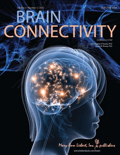
Brain Connectivity
Scope & Guideline
Decoding the Complex Web of Neural Connections.
Introduction
Aims and Scopes
- Resting-State Functional Connectivity (RSFC):
The journal frequently publishes studies utilizing resting-state fMRI to analyze spontaneous brain activity and its connectivity patterns, providing insights into brain function during rest. - Neuroimaging Techniques:
Research in Brain Connectivity employs a variety of neuroimaging methods, including functional magnetic resonance imaging (fMRI), electroencephalography (EEG), and magnetoencephalography (MEG), to investigate brain network dynamics. - Clinical Applications:
The journal explores the clinical implications of brain connectivity research, particularly in relation to neurological and psychiatric disorders such as Alzheimer's disease, Multiple Sclerosis, and PTSD. - Network Analysis and Modeling:
Studies often involve advanced computational techniques for modeling brain networks, including dynamic causal modeling and graph theory, to assess connectivity and its association with cognitive functions. - Developmental and Aging Studies:
Research examining brain connectivity across different ages and developmental stages is a consistent focus, providing insights into normal and pathological aging processes.
Trending and Emerging
- Dynamic Functional Connectivity:
There is an increasing interest in dynamic functional connectivity, which examines how brain networks change over time during different cognitive tasks or resting states, revealing the fluid nature of brain interactions. - Neurodevelopmental and Neurodegenerative Disorders:
Research focusing on understanding brain connectivity in both developmental disorders (like autism) and neurodegenerative diseases (such as Alzheimer's) has gained significant prominence, reflecting a growing concern for these conditions. - Integration of Machine Learning Techniques:
The application of machine learning and artificial intelligence to analyze brain connectivity data is emerging as a key trend, enhancing predictive modeling and the understanding of complex brain network dynamics. - Environmental and Lifestyle Factors:
Studies investigating the impact of lifestyle choices, such as exercise and diet, on brain connectivity are trending, highlighting the interplay between environmental factors and neurological health. - Interdisciplinary Approaches:
There is a noticeable shift towards interdisciplinary research that integrates insights from psychology, cognitive science, and neurobiology to better understand the implications of brain connectivity.
Declining or Waning
- Traditional Structural Connectivity Studies:
There is a noticeable decrease in studies focused solely on traditional structural connectivity, as the field increasingly emphasizes dynamic and functional connectivity approaches. - Overemphasis on Single Modality Imaging:
Research that relies exclusively on single-modality imaging techniques, such as purely anatomical MRI without functional correlates, has become less prevalent as multi-modal approaches gain traction. - Basic Cognitive Function Studies:
Investigations solely focused on basic cognitive functions without linking them to broader neurological implications or complex network interactions are appearing less frequently.
Similar Journals
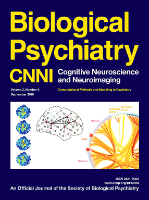
Biological Psychiatry-Cognitive Neuroscience and Neuroimaging
Pioneering Discoveries in Neuroimaging and PsychiatryBiological Psychiatry-Cognitive Neuroscience and Neuroimaging is a leading interdisciplinary journal published by Elsevier, focusing on the convergence of biological psychiatry, cognitive neuroscience, and advanced neuroimaging techniques. With its prestigious Q1 rankings across essential categories such as Biological Psychiatry, Cognitive Neuroscience, and Neurology (clinical), this journal is at the forefront of research that examines the complexities of mental health through innovative methodologies. Covering a broad spectrum of topics from neurobiological mechanisms to clinical applications, it aims to provide a platform for scholars and practitioners to exchange insights on mental disorders and their neurobiological underpinnings. The impact factor and Scopus rankings further underscore its importance, with rankings highlighting its position in the top percentiles of related disciplines. By fostering an open exchange of ideas and promoting cutting-edge research, this journal is an essential resource for researchers, professionals, and students dedicated to advancements in the understanding and treatment of psychiatric and neurological conditions.
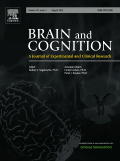
BRAIN AND COGNITION
Advancing Insights in Cognitive NeuroscienceBRAIN AND COGNITION, published by Academic Press Inc Elsevier Science, stands as a vital resource for researchers and practitioners in the realms of cognitive neuroscience and psychology. Established in 1982, the journal has continuously evolved, showcasing cutting-edge research that bridges the understanding of brain functions and cognitive processes up to 2024. With an impressive impact factor reflecting its commitment to high-quality scholarship, the journal currently holds a prestigious Q1 ranking in Arts and Humanities (miscellaneous) and notable Q2 rankings in various psychology fields, including Cognitive Neuroscience, Developmental and Educational Psychology, Experimental and Cognitive Psychology, and Neuropsychology. This multidisciplinary journal cultivates a rich academic dialogue, offering valuable insights to professionals, researchers, and students alike. Although it does not offer open access, its robust indexing in Scopus and consistent contribution to important discussions in cognitive research define its critical role in advancing knowledge and innovation in the cognitive sciences.

Brain Structure & Function
Exploring the Interplay of Anatomy and FunctionBrain Structure & Function is a premier peer-reviewed journal published by Springer Heidelberg, focusing on the intricate relationships between brain anatomy and its functional implications. With a significant presence in the academic community, the journal is recognized for its high impact, evidenced by its rankings in the Q1 categories of Anatomy and Histology and its commendable position in the Neuroscience field. It has successfully maintained a convergence of research and innovation from 2007 to 2024, providing critical insights that drive forward our understanding of the brain. The journal's outstanding metrics, including a ranking of #6 in Anatomy and #18 in Histology within Scopus, highlight its role in shaping modern research. Offering open access options, Brain Structure & Function ensures that its cutting-edge findings and methodologies are accessible to a broad audience of researchers, professionals, and students eager to contribute to the evolution of neuroscience. With its comprehensive scope and commitment to high-quality research, this journal is an essential resource for anyone invested in the complexities of brain structure and their functions.
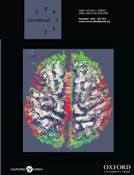
CEREBRAL CORTEX
Connecting cellular insights to cognitive breakthroughs.CEREBRAL CORTEX, published by Oxford University Press Inc, is a premier journal dedicated to advancing the field of neuroscience, specifically focusing on the cellular, molecular, and cognitive aspects of cortical structure and function. With an impressive impact factor that situates it in the top quartile (Q1) of its categories for 2023, this journal holds significant relevance for researchers and professionals interested in the latest discoveries and methodologies in both Cognitive Neuroscience (ranked #31 out of 115) and Cellular and Molecular Neuroscience (ranked #48 out of 97). Operating without an open access model, it ensures rigorous peer review and dissemination of high-quality research from across the globe. Since its inception in 1991, CEREBRAL CORTEX has established itself as a critical platform for educators and inventors, pushing the boundaries of knowledge in understanding brain function and its implications for behavior. Researchers and students alike will find this journal an invaluable resource for both foundational and cutting-edge studies in neuroscience.

Frontiers in Neuroanatomy
Empowering discoveries at the intersection of anatomy and neuroscience.Frontiers in Neuroanatomy is a premier open access journal published by FRONTIERS MEDIA SA, dedicated to advancing the understanding of neuroanatomy and its implications in health and disease. Established in 2007 and operating under an open access model, this journal aims to disseminate high-quality research that bridges the gap between cellular and molecular neuroscience and anatomical studies. Based in Switzerland, Frontiers in Neuroanatomy has made significant strides in its impact, earning a Q1 ranking in Anatomy and notable Q2 rankings in diverse areas of neuroscience as of 2023. With an active role in the scientific community, it empowers researchers to share their findings widely, fostering collaboration and innovation in a multidisciplinary environment. Researchers, professionals, and students alike can explore a rich collection of peer-reviewed articles, enhancing their understanding of vital neuroanatomical structures and functions, positioned at the intersection of anatomy and neuroscience.
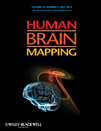
HUMAN BRAIN MAPPING
Connecting knowledge to clinical practice in neuroscience.HUMAN BRAIN MAPPING, published by Wiley, is a premier journal in the field of neuroscience, devoted to comprehensively advancing understanding of brain structure and function through innovative mapping techniques. With an impressive impact factor and ranked in the Q1 category across multiple relevant disciplines—including Anatomy, Neurology, and Radiology—this journal is recognized as a vital resource for researchers and professionals passionate about the complexities of the human brain. Founded in 1993 and continuously publishing groundbreaking research, HUMAN BRAIN MAPPING is essential for those looking to stay at the forefront of developments in anatomical and neurological research. Though it does not currently offer Open Access options, the journal remains committed to disseminating high-quality research that influences clinical practices and academic inquiry. Its esteemed position within Scopus highlights its significance; charting at the top percentiles across various medical and health fields serves as a testament to the critical contributions made by the authors and researchers involved. As it converges toward 2024, HUMAN BRAIN MAPPING continues to be the go-to platform for publishing pivotal insights into the intricacies of brain mapping methodologies and applications.

NeuroImage-Clinical
Pioneering Research for a Healthier Neurological FutureNeuroImage-Clinical is a premier open access journal published by Elsevier Science Ltd, dedicated to advancing the field of clinical neuroimaging and its applications in a variety of neurological disorders. With an ISSN of 2213-1582, this journal has established itself as a leading source of innovative research since its inception in 2012, now continuing through 2024. Recognized for its high impact, it occupies the top quartile (Q1) in prestigious categories such as Cognitive Neuroscience, Neurology, and Radiology, affirming its relevance in clinical and research settings. Its Scopus rankings further exemplify its significant contribution to the disciplines of Radiology and Neurology, consistently placing it among the top tiers of journals in these fields. This journal not only provides critical insights for researchers and professionals but also serves as a valuable resource for students, fostering an understanding of the complexities in neuroimaging techniques and their implications for patient care. With open access options ensuring broad dissemination of knowledge, NeuroImage-Clinical plays a pivotal role in enhancing collaboration and innovation within the global neuroscience community.
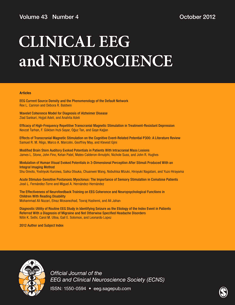
CLINICAL EEG AND NEUROSCIENCE
Illuminating the Pathways of Brain FunctionCLINICAL EEG AND NEUROSCIENCE, published by SAGE Publications Inc, stands as a pivotal journal in the fields of neurology and neuroscience, with a focus on the latest research and advancements in clinical electroencephalography and neurophysiology. Since its inception in 1970, the journal has provided a platform for rigorous scholarly work, offering valuable insights into neurological disorders and EEG technology. With its current categorization in the Q2 and Q3 quartiles across various subfields of medicine and neurology, it ranks prominently in the Scopus database, emphasizing its significance in academic discourse. The journal's commitment to disseminating high-quality research is underscored by its open access options, facilitating broader accessibility to its published findings. For researchers, clinicians, and students alike, CLINICAL EEG AND NEUROSCIENCE remains an essential resource for keeping abreast of the evolving landscape of neurological studies.
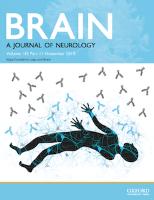
BRAIN
Transforming Medical Research through Rigorous Peer ReviewBRAIN, published by Oxford University Press, stands as a preeminent journal in the realms of neurology and medicine, with a formidable impact factor reflecting its rigorous peer-reviewed standards and significant contributions to the field. With its ISSN 0006-8950 and E-ISSN 1460-2156, this esteemed publication spans over a century of exceptional research, converging from its historical roots in 1878 to current groundbreaking studies. BRAIN boasts a distinguished rank of #8 out of 400 in the Scopus category of Neurology (Clinical), placing it in the 98th percentile of institutions, indicative of its influence and reach. Operating under the Q1 category in both Medicine (Miscellaneous) and Clinical Neurology, the journal is dedicated to fostering interdisciplinary dialogue among researchers, clinicians, and students alike. With a focus on innovative findings and clinical advancements, BRAIN serves as a vital resource for those seeking to deepen their understanding of neurological disorders and the evolving landscape of medical research.

Journal of Integrative Neuroscience
Bridging Disciplines to Illuminate the Nervous SystemWelcome to the Journal of Integrative Neuroscience, a prominent platform dedicated to advancing the field of neuroscience by fostering interdisciplinary research and innovation. Published by IMR PRESS, this open-access journal has been committed to disseminating high-quality research since its inception in 2002, with a vision to integrate various aspects of neuroscience, from theoretical foundations to applied methodologies, ultimately enhancing our understanding of the brain and nervous system. With an evolving presence in the academic community, the journal holds significant rankings, such as Q2 in Medicine and Q3 in Neuroscience for 2023, reflecting its growing impact and value to researchers and professionals alike. The journal is accessible globally, having adopted an open-access model in 2018, ensuring that vital neuroscience findings reach a broader audience without barriers. Positioned in Singapore and serving an international readership, the Journal of Integrative Neuroscience is your essential resource for the latest insights and discoveries in a rapidly evolving field.